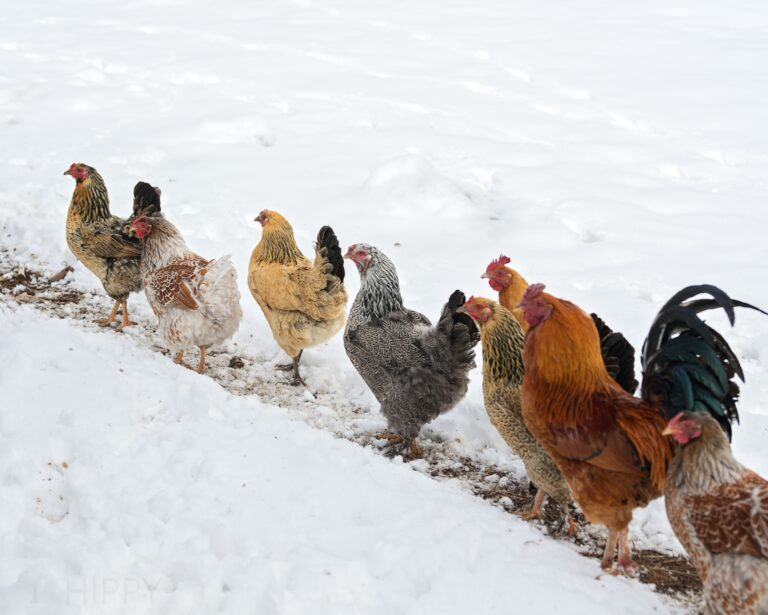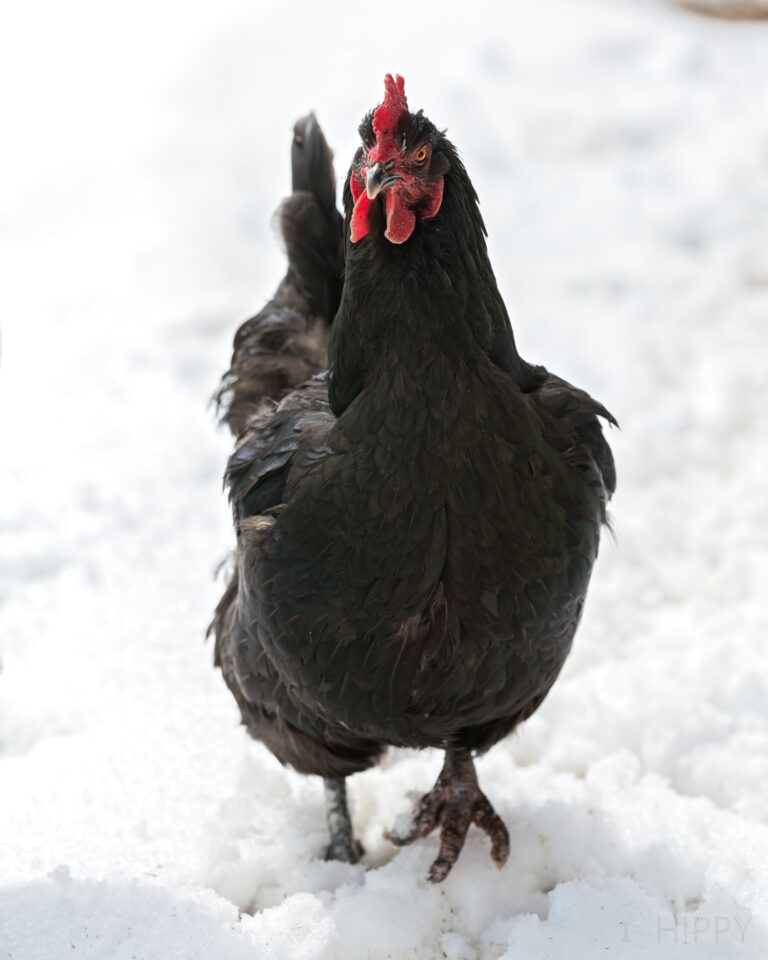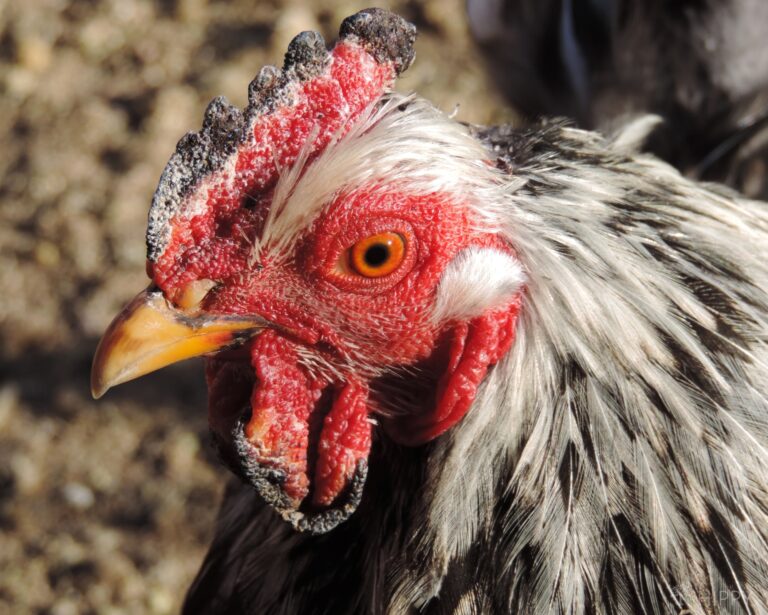Winter can be a particularly hard time to keep chickens. During the cold months, I used this time to purchase the chickens that people−the folks I referred to as Towneyz −didn’t want anymore.

I did understand their not wanting to keep their chickens during winter. They are more work, and it is cold out. There are days that it is so cold out that you may not want to travel to let your birds in and out. That’s what we are talking about today.
There are methods to caring for your chickens during the cold months. Of course, winterizing is essential. This is one of those things I refer to as, ”Working smarter, and not harder.”
Do’s
- Heat the Water
- Let Them Out
- Make a Window
- Provide a Heat Lamp
- Install Lights
- Install Cardboard
- Make Sure They Have Shelter
- Scatter Hay
Dont’s
- Don’t Lower The Heat Lamp
- Don’t Keep Them Locked Up
- Don’t Keep the Coop Too Warm
I LOVE chickens. I always call them my girls. They bring me so much joy and I –of course−love their eggs. They are very easy pets but do require some care.
They are especially fragile in the winter and convenience is your friend. There are tried and true methods to keeping your girls cozy and loved in the winter.
Do’s
Do Heat the Water
This one needs to be repeated. I will be talking about this again. Chickens, like all species, need water. When the temperature gets below freezing, they still need fresh water. This is the most important part of winterizing your chickens.
One year it got extremely cold and reached temperatures way below freezing. I bundled myself up and thought of how the cold can negatively impact my chickens.
Needless to say, I did keep them locked away. I made sure they had fresh water by buying a small heat source at a local feed store and the accompanying waterier.
Making sure your chickens have unfrozen water may be one of the most important things you can do for them. Yes, some warmth and shelter are important. The most valuable thing is water though.
If you don’t have the means to plug in a device to provide electric heat, consider carrying boiling water to them.
No, you don’t want to leave them with scalding water. Yes, you do want water to be warm enough to melt all the ice and provide them with fresh water every day.
Before I had a heating element, I used this method and it did melt the frozen water and cooled when it melted the ice. Make sure the water is cool enough to drink, but not so hot it causes burns.
Think of their water temperature like you would warming up a bottle for a human baby. Test the water temperature on your wrist before you leave the coop.
If it’s too warm for you it is too warm for your girls. Making sure they have an adequate supply of fresh water daily is imperative.
If they go too long without fresh water then they will die. This is probably the most important thing you can do to winterize your chickens. They should have clean and fresh water every day of the year. In the winter make sure it doesn’t stay frozen.

Do: Let Them Out
Even in the cold winter months, your chickens need exercise and to be outside. I always did everything I could to let my chickens out every day.
They need to be able to get sunlight for some time during the day. I raise several varieties of chickens, and they will still occasionally lay eggs in the winter.
You should always let them out to walk around and you should still check for eggs. Know that chickens lay according to the path of the sun.
They usually stop laying around the fall equinox and don’t start again until the spring equinox. If you don’t want to head out to your coop every day, there are door-opening options you can plug into your smartphone.
Installing a door that you can open from your phone is an amazing addition, and can keep you warm on those chilling days your girls need to get out, but you want to stay in.
Pick a day in the spring to install it. You will need to still be able to cut a hole in the wall of your coop.
Chickens will be able to figure out the location of the opening. If your coop is high up, a simple staircase can aid them in getting down.
They do have the ability to fly short distances, and if you don’t want to install a staircase you don’t have to. We’ve embedded a video that shows you just what kind of door you can put in and operate from your smartphone.
Do Make a Window
You want some form of a chicken house for your girls. In the summertime, if you leave your windows open and screw in a type of chicken wire that will suffice.
In the winter you still want a form of ventilation for your birds. To make a simple window cover all you need is a straight edge and a drill.
With galvanized staples, you can get some simple plywood and cut it the size of your window. It’s then you go to the hardware store and purchase some hinges and follow the directions to put them on the door. This provides a way to ventilate your birds and keep them closed in the winter.
This quick and easy window on your chicken house will help keep it insulated during cold nights, and provide a simple and cheap way to protect your chickens in the cold winter.
Winters are hard for chickens. Living a simple lifestyle that isn’t pressed on things like time really is easy. Hens are more care in the winter, but everything is.
It really is a fun time to see your first egg. The best way to keep them cozy in the winter is to build them a simple door covering for your chicken window.
Drafts and breeze are a nightmare, however, they do need ventilation. They need some fresh air in the winter. With a little planning, you can make a simple window.
Chicken care in the winter can be more difficult. They do need ventilation, but a cold wet breeze can spread disease. Keep the water clean and fresh and keep the windows open in the winter.
By installing this easy door for your birds, you will be making it less of a chore and more of a joy. This isn’t a good time of the year to clean your coop. Do it in the spring and put the shavings in your compost bin. This season is about keeping them comfortable until spring.
Do Provide a Heat Lamp
Now, there is controversy over owning a heating lamp. On the one hand, A heat lamp will add radiated heat. On the other, it is a potential fire hazard.
For more information on coping with fire, we do provide information on what do to if there’s a homestead fire. There are chicken folks who say you don’t need a heat lamp.
This is akin to what is termed Forced Laying by adding light. It isn’t necessary, but you might want to consider it.
If you don’t have access to electricity going into your coop don’t go crazy trying to get it there so you can add a heat lamp. One year I lowered my heat lamp too low and one of my birds got burned.
It was not fun to deal with. However, a properly installed lamp that is raised can provide some additional heat. Chickens grow down feathers in the winter. They do have natural abilities to keep warm during the cold months.
I installed a heat lamp because I had electricity leading up to my first coop. Straw is a great insulator and can serve your chickens in the winter. By adding a heat lamp, you are adding a potential fire hazard. I have had weather where it got below 25 degrees.
To me, that was too cold for my girls. I know you don’t want to cause too many problems for your girls.
You want them comfortable and happy. However, installing a heat lamp can add problems and not eliminate a problem. Heat lamps are a big consideration and not something that you need to stress about.
You will become a Chicken Master in time. You do not need to start your flock with a heat lamp unless you are starting with baby chicks.
Do Install Lights
Hens can provide eggs all year round. In order to do this you will need to install lights that turn off at a certain time and come on at a certain time. That’s called forced laying. Hens lay in accordance with the amount of light in the season.
Most hens do not lay during the winter. Know that if your hens do lay all year round, they will stop laying sooner.
Know that hens do have a lot of predators, and if you let them lay in accordance with the season you may lose a bird anyway. I always kept one rooster in order to protect the hens.
Once a predator knows there’s a food source they will return. There are some who simply say that it is an unhealthy habit to start. I say if you want to do it, do it. Know that it is an additional fire hazard. We’ve written about potential fire hazards in the past.
All animals need dark and light. Adding additional lighting can cause health problems and make them age faster. Know this before you do it. If you want eggs all year round it is a consideration. Hens lay their eggs in accordance with the fall and spring equinox.
If you do this, then try to not go above the lowest time right before fall. That way, you won’t be giving them too much additional light so they can still naturalize themselves for winter. It will be cold and you do want nature to in some way protect them.
Do Install Cardboard
Very inexpensive and will make your coop warmer. Use it as a panel and a hammer to place and remember to remove it in the spring.
If your windows aren’t covered, remember to leave some of the windows open to provide air ventilation for your birds. You don’t want soggy girls gathering in your coop; that is a hotbed for disease.
It really is a great and inexpensive insulator… Nowadays, people order so much online, they have extra cardboard boxes just lying around.
If you’re not planning on doing any Forced Laying or installing heat lamps then consider installing this. All you really need is time and a staple gun.
Putting this extra insulation in your coop will help keep your girls sheltered and wick away dampness caused by the extra moisture caused by drafts and cold. If it gets damaged, then just take it off and throw it away.
Remember that they do grow under feathers in the cold. They may not need heat lamps or extra lighting, but they do need shelter.
Do Make Sure They Have Shelter
In the dark winter months, your chickens will need some sort of shelter. The two main killers of chicken in the winter are lack of water and frostbite.

If you’re skeptical of what would make good shelter, I suggest you find a tour in your community. This will give you a real glimpse into what people do for their birds and help you come up with an idea that will work best for you.
There is a number of things you can use to adapt to a coop for your birds. If this doesn’t appeal to you, most farm places do sell ready-made pieces or coops at quite a higher cost.
If you are planning to adapt or build your own coop, consider the roof. In many places in the winter, the roofs are specifically designed to withstand the buildup of snow. You will need to consider this when you build the roof of your chicken house.
If too much weight is piled on, your roof may cave in and cause disarray and even death for your chickens. Make sure they do have someplace to go in that provides them with shelter during the cold and wet winter months.
Do Scatter Hay
Your chickens will need to go outside at some point during the cold winter. By scattering hay on the ground they will have bedding material that will help them stay warm.
You always want the driest and freshest hay up top. Plan on scattering hay around your coop at least once per month in order to provide them with a place to walk around and get sunlight and exercise.
Don’ts
Don’t Lower The Heat Lamp
One year I had the heat lamp in my nesting boxes. One of my birds got too close and burned her back. Keep your heat lamp high enough to provide some warmth, but not so close that your birds get burned.
Having your heat lamp too close to the ground or the hay or pine shavings can increase your chances of a fire occurring. A heat lamp is your choice and know there are risks. Chickens can withstand cold weather. They need fresh water and shelter more.
Don’t Keep Them Locked Up
Your chickens will need to go out every once in a while. Your coop will need ventilation or else it will get damp and sticky. This can cause rampant disease to spread.
Don’t Keep the Coop Too Warm
You will be doing your girls a disservice by heating the coop too much. You can prevent them from growing their down feathers. They need shelter and fresh water the most.
There is an amount of sweat that goes into caring for your chickens. They are more difficult to take care of in the winter.
If you are really into learning more about chickens, then find your local farm bureau or 4-H, and don’t be afraid to ask questions. Another good place is at the local fair. People love to talk about their chickens and you can find a kindred spirit in the process.


Amanda is a homesteader and a Jesus-loving, mother of 6 toddlers. She’s raising lots of fancy chickens and goats on her small homestead (among other things). Find out more about the team here.

I had to chuckle at your definition of “cold”. 25 degrees is NOT cold for a chicken. They have an internal temp of 103 – 105, so they are naturally warmer than we are. Add to that a down coat and presto they are pretty warm all year. They DO need to cover their feet with their feathers on the roost to prevent frostbite, so roosts should be 2 inches or wider. That way their toes are flatter and more covered by their body feathers. (On a narrow perch their toes curl around it and their body feathers can’t go below the perch)
Adding heat to a coop will cause the ammonia in their poop to evaporate increasing the smell and the chances of lung irritation and thereby other illnesses. If you absolutely have to, or you can’t sleep a wink, consider putting your heat lamp on a timer so it is only on for a couple of hours during the coldest part of the night (which is usually right before dawn, ironically) If your birds get used to the supplemental heat and you have a power failure and can’t provide it, they might die of the cold because they haven’t grown enough feathers to withstand the weather.
My chickens have survived temperatures below 0 to – 10 with wind chills of – 35 to – 50 without supplemental heat. I did build my coop with that in mind and the windows are glass and south facing. At night, when I close the coop up (yes, it’s open every day regardless of outside temp) I put some cracked corn or black oil sunflower seeds in their feed try to help them maintain their body temp over night. I have no insulation, of any kind, in my coop. Plywood walls with vinyl siding to match the house (not my idea, folks, but the builder said he just HAD to make it match. LOL)
I have never lost a chicken to cold. I HAVE lost several to over heating in the summer, however. I did pick my breeds of chickens to be cold hardy and provide them frozen treats in the dog days of summer to keep them from over heating. Since there are far fewer high heat days then low temp days it made sense to consider only breeds that can tolerate the cold. (Small comb and wattles, feathered feet, Higher body weight, etc)
Thank you!! I have 9 girls and one boy and 7 weeks old. I have 5 amber links and 5 easter Eggers. One of the Easter Eggers is a boy. Our coop is almost finished. Waiting on our chicken wire.
Ty ladies for advice
Linda
As someone with chickens in Alaska please do not recommend heat lamps. They are so dangerous
. Never use one around any flying creatures. Pinterest it. Our coop is not insulated but there is no drafts and it is dry. We use sand as litter. So easy to clean and dry. Droppings boards work well. We have installed rope lights to provide 14 hours of light and we get eggs everyday.Chickens have no problems in the cold. My girls don’t leave the run in the winter even when we shovel for them.
Can you please share with me the type of sand you use. I have a multipurpose sand (gray in color) in their run area, but I feel that is probably not the best for inside their coop.
I have the brooder heat “plate” thing. It’s amazing. My chickens are heat hardy, 100+F, but my husband likes when they have heat when it gets down to 30’s.